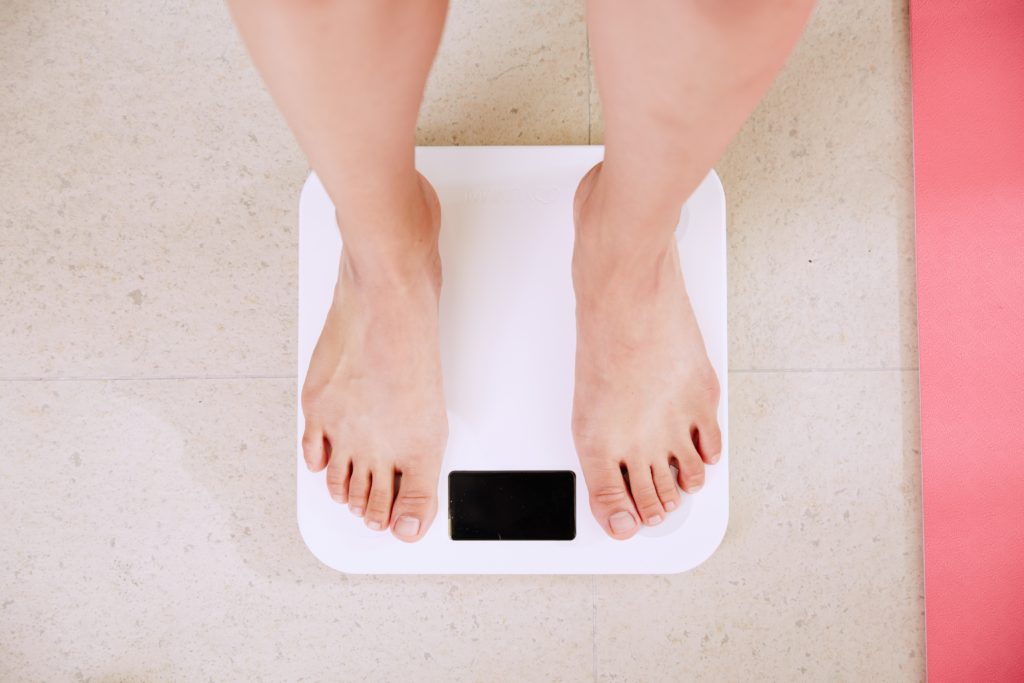Weighing Yourself 101
Over time, it has become quite evident to me that people give the scale a whole lot of attention, but have no idea as to how to really track weight and body fat. Because of the discrepancies I have seen, I wanted to dedicate this blog post to the extremely important and overlooked topic of weight loss progress tracking. Most people assume that the process is as simple as standing on a scale and logging their weight. People believe that if the scale goes down, they must have lost fat and if the scale has gone up, they must have gained fat. Unfortunately, the logic is usually inherently flawed and more than likely, their readings were incorrect anyhow.
Take Total Body Weight with a Grain of Salt
I am amazed at how many people dedicate the commitment to exercise and diet, and only measure their progress with a scale. When you stand on the scale, think about what all you are weighing. The scale is weighing anything you are wearing. It is also weighing anything in your stomach, digestive system, bladder or colon. It is weighing your organs, water, blood, bones, muscle, fat, and a whole lot more. Essentially, everything that is resting on the scale is being weighed. As you can imagine, there are huge inconsistencies in scale readings from one day to the next that do not involve fat. Furthermore, if you are doing any sort of exercising that involves resistance, you are in all likelihood recording muscle gains as well. Of course, the average person sees a scale reading increase and immediately assumes it is fat gains, without realizing that they may be adding beneficial muscle! Hopefully it is becoming clear that the scale is just a tool, and total body weight does not paint a clear enough picture of your body for the purposes of tracking progress.
Similar to the flaws of total body weight, Body Mass Index (BMI) is based on factors including total body weight, and it erroneously labels someone (such as myself) with ample muscle and 10% body fat as obese! The bottom line is to be aware of BMI, but do not be overly concerned with them. Unfortunately, doctors and insurance companies still use this antiquated means of physique categorization.

How to Properly Weigh Yourself
Now that it is understood that total body weight is moderately helpful at best, I wanted to spend some time explaining how to actually weigh yourself so that your results are at least consistent. I see people constantly do it wrong, and inconsistencies causes significant fluctuations and variance in readings. Things such as food, drink, body waste, clothing, shoes, even wetness from a shower can skew the results. Here are tips to consistent, reliable results with a scale:
- Weigh yourself immediately after waking up in the morning.
- Be completely undressed. Remove all clothes, undergarments, socks, jewelry, everything.
- Completely empty your bladder and bowels beforehand.
- Do not drink or eat anything prior to weighing yourself.
That’s it. If you adhere to the above, all the variables are taken out of the total body weight equation and you will be tracking changes to lean body mass plus fat, only, as intended. Another recommendation, do not weigh yourself more frequently than once per week. Even following the above guidelines, weight fluctuations still occur based on hormones, water retention, and other factors. Weekly weigh-ins truly show trends and largely eliminate routine fluctuations.
How to Measure Body Fat Percentage
Most people will admit that they do not really care about the weight of their bones and organs, but instead wish to know how much fat is on their body. This is generally calculated as a percentage of fat to total body weight. The best way that I have found to measure body fat is with an inexpensive set of body fat calipers. The set that I use is currently for sale on Amazon for only $12.50 with free shipping. They are extremely easy to use and very accurate. The calipers come with instructions, but the process is generally as follows. At 3 different sites on your body, you will pinch with your fingers a 3″ section of skin and fat, and pull it away from your body. With your other hand, or with someone’s assistance, pinch the calipers adjacent to your fingers so that the calipers are gripping the fat and skin. Measure each site at least 5 times until you get consistent results, and record the determined result for each site. Afterwards, add up the 3 measurements and record the sum. The calipers come with a chart that lists gender, age, and total measurements. Find your total measurement on the chart for the appropriate age and gender, and it will reveal your body fat percentage.
As an example, on a male, there are three pinch sites. I pinch three inches between my armpit and nipple, three inches vertically on my belly adjacent to my belly button, and three inches on the front of my thigh between my knee and crotch. I pinch each section, gently pull away from the body, and measure with the calipers. My last reading was 5 mm near my armpit, 18 mm along my belly, and 9 mm on my leg. Therefore the sum of those site measurements is 32 mm. On the caliper chart, for a male between ages 39 and 41 with total measurements between 30 and 32 mm, my body fat percentage is 10%. With that information, I now know that my body is 10% fat, and 90% lean body mass. Also, armed with the (accurate) total body weight reading of 227.5 pounds from an earlier in the morning, I know that I am carrying 22.75 pounds of body fat (227.5 x 10%). That is a very meaningful metric that I can track from week to week. Despite the gains in total body weight that will occur as a result of muscle gains from my workouts, I will still be able to accurately monitor my body fat and adjust it as necessary with healthier diet or higher intensity workouts. It is not uncommon for body fat to change independently of total body weight, which is why this test is so important.
Bottom Line
The takeaway from all of this is that most people are oblivious to how insignificant total body weight is without any context or supporting information. It is also commonly measured incorrectly. I certainly hope that you have learned from this article to measure your body fat in addition to performing accurate readings of your total body weight to draw the correct conclusions of your body fat. Armed with that information, you will be well on your way to reaching your weight loss goals! As always, please direct any questions or comments to me via the box below.
Disclaimer: The information contained in this blog is based entirely upon my experiences and observations. I am not a medical professional and you must do your own research and consult your doctor before making any changes to your eating, fitness, medication, or supplements. This general information is not intended to diagnose any medical condition or to replace your healthcare professional.
Amazon is a registered trademark of Amazon.com, Inc.

Thank you for all of the great tips!